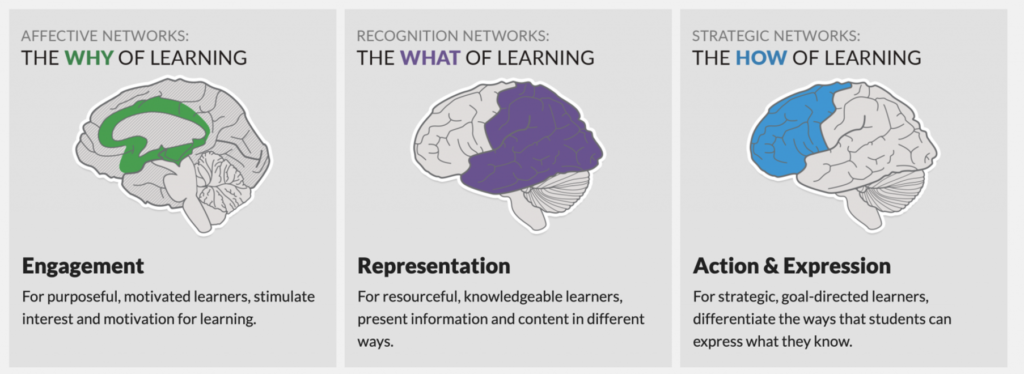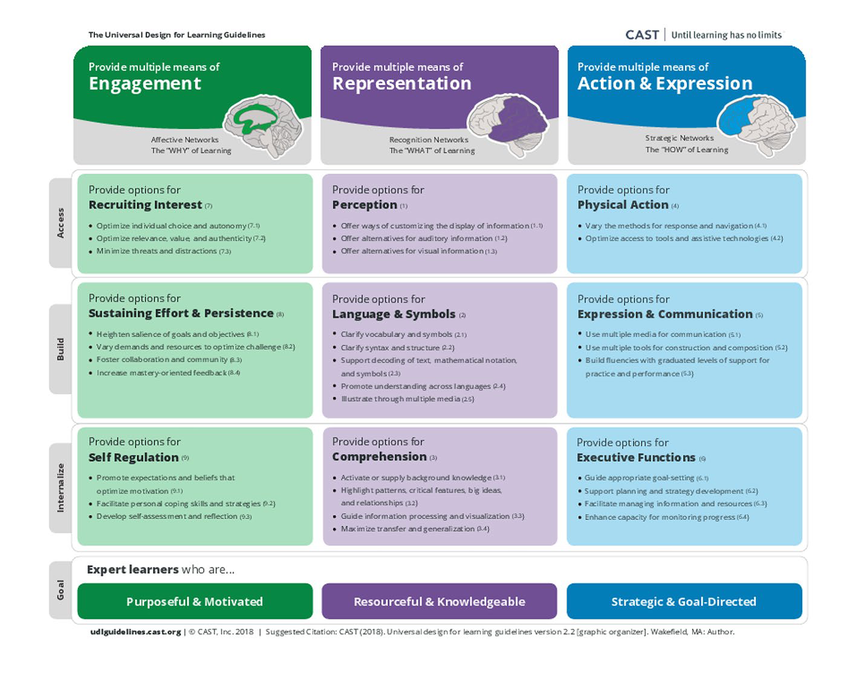by Brena Collyer de Aguiar, Senior Learning Technologist, Online Distance Learning, University of Sussex
WARNING: This blog is a provocation and probably contains too much hope, romanticism and motivation for change.
Many years ago I tried to get a job at FUNAI (the National Indian Foundation) which protects the culture and interests of indigenous people in Brazil. To get that job I had to do an exam on Morals and Ethics.
I failed miserably.
My brother (who was a law student at the time) read through my answers and asked me what I had been thinking as none of my answers could possibly apply to the real world. My choices in the exam reflected values which were “impossible in any society,” he said.
I’ve fallen in love…
with a framework for inclusive education
Years later, now working in education, and I’ve fallen in love with a framework for inclusive education called the Universal Design for Learning (UDL). I am not sure whether UDL is going to change the world on its own, but it goes a long way toward to the UN’s Sustainable Development Goal #4, which is to “Ensure inclusive and equitable quality education and promote lifelong learning opportunities for all.” This is a good start, right?
The Universal Design for Learning (UDL) is a framework that makes curricular design more flexible, aiming to make learning spaces more inclusive by removing barriers and providing learning opportunities for all students. It is based on learning theories, educational practice and research, technologies, and advances in neuroscience.
UDL is structured around three groups of neural networks – affective, recognition and strategic networks – and proposes three principles related to them: multiple means of engagement, multiple means of representation and multiple means of action and expression. Each principle is divided into guidelines and checkpoints to aid the implementation of UDL in a given learning environment.

© CAST, 2024
Technology has a very important role in this framework. It not only facilitates communication, but its flexibility, versatility and potential to mediate and transform enables manifold possible responses to diversity and accessibility needs.
Three UDL Principles
Multiple means of engagement
This principle is linked to the affective neural networks responsible for the learners’ interests and preferences that influence their motivation and engagement for learning. It is associated with the why of learning. It encourages the implementation of varied learning practices that reflect different interests creating multiple pathways for engagement. The guidelines related to this principle are: Recruiting Interest, Sustaining Effort & Persistence and Self Regulation.
Examples of providing multiple means of engagement include: interactive activities, authentic activities that reflect real world situations, allowing students to choose their own assessment topics, and group discussions or online discussion boards.
Multiple means of representation
This principle is linked to the recognition neural networks that allow us to capture, recognise and integrate information, creating meaning from what is perceived. It is associated with the what of learning. It encourages multiple representations to guarantee learners have access to the information and can learn. Providing information in multiple formats (video, audio, text, etc) not only addresses preferences, but also takes into consideration and provides access to information for those with sensory and learning disabilities and/or language or cultural differences and so on. The guidelines related to this principle are: Perception, Language & Symbols and Comprehension.
Examples of providing multiple means of representation include: Presenting information in multiple formats such as images, video and audio, providing video captions and transcripts, and diversifying pedagogical approaches in the learning environment.
Multiple means of action and expression
The strategic neural networks are related to this principle. Associated to the how of learning, these networks specialise in the generation and control of mental and action patterns as well as executive functioning, where learners apply what they learn strategically. This principle focuses on the different ways learners interact with information, how they learn and their cognitive preferences. The use of different methodologies encourages and enables learners to demonstrate their knowledge and skills in various ways. The guidelines related to this principle are: Physical Action, Expression & Communication, and Executive Functions.
Examples of providing multiple means of action and expression include: using a variety of assessment strategies, different methods for demonstrating skills (e.g.: roleplay), varying question types, using technology to facilitate communication, and peer interaction.
Be curious.
Is there anything you already consider in your
teaching practice? Something you would like to try?
Look at the full framework, including principles, guidelines and checkpoints below. Be curious, is there anything you are already familiar with? Anything you already consider in your teaching practice? Something you would like to try?

We will explore all principles, guidelines and checkpoints in more detail in other blog posts and share real examples of its implementation in our Online Distance Learning courses. See also our EE guidance page on inclusion, accessibility and universal design for learning. You didn’t think we could change the world with information available in one blog post only, did you? For now, if you want to find out more or chat about UDL, please contact us.
And don’t tell my brother I’ve written this!
References:
- The UDL Guidelines https://udlguidelines.cast.org/
- Universal Design for learning: a theoretical anD practical moDel for an inclUsive, qUality eDUcation Carmen Alba Pastor Universidad Complutense de Madrid – https://www.educacionyfp.gob.es/dam/jcr:c8e7d35c-c3aa-483d-ba2e-68c22fad7e42/pe-n9-art04-carmen-alba.pdf
- Inclusión y Exclusión Educativa. “Voz y Quebranto” – https://revistas.uam.es/reice/article/view/5437
- https://iris.peabody.vanderbilt.edu/module/udl/challenge/#content


